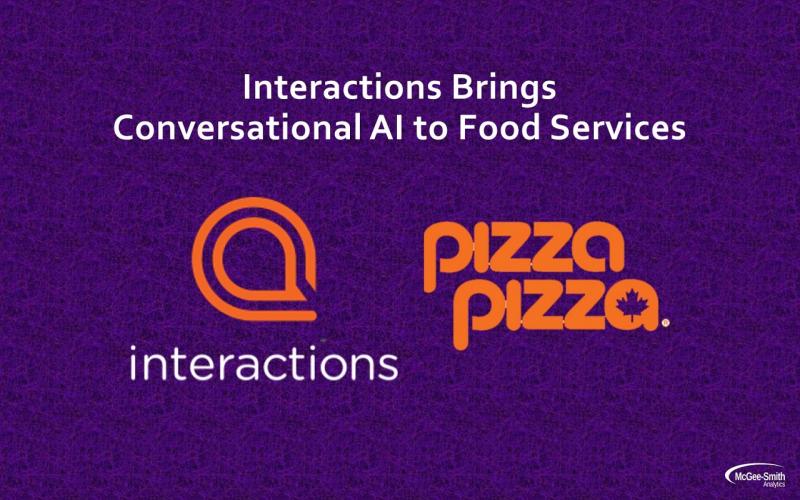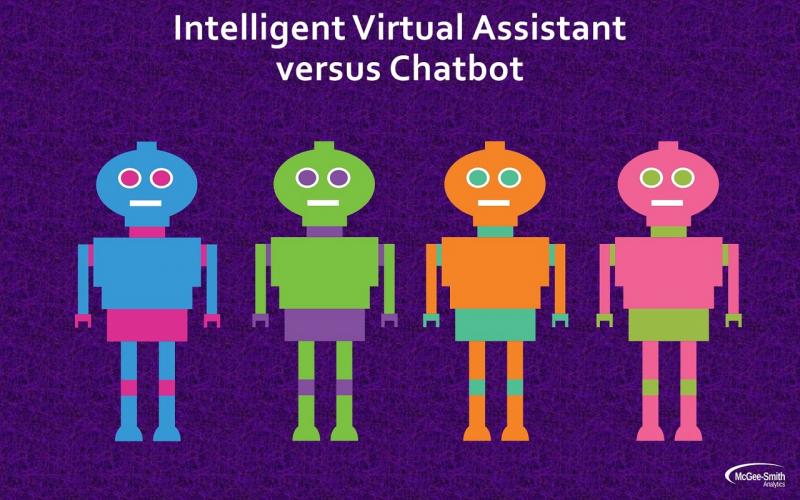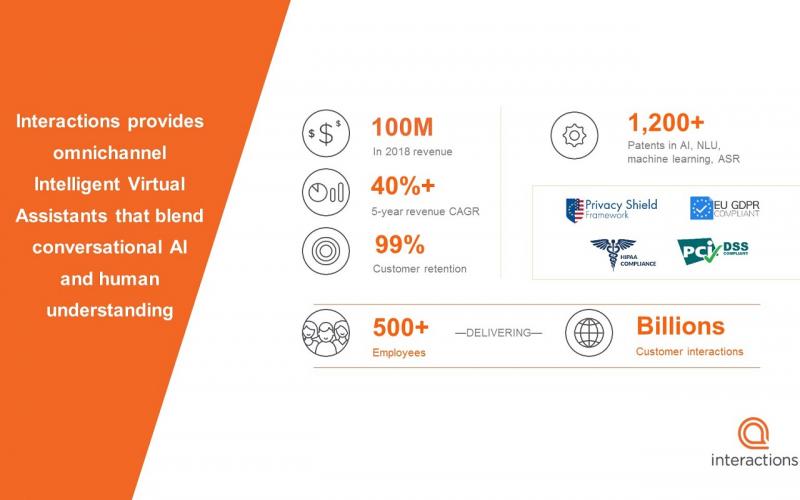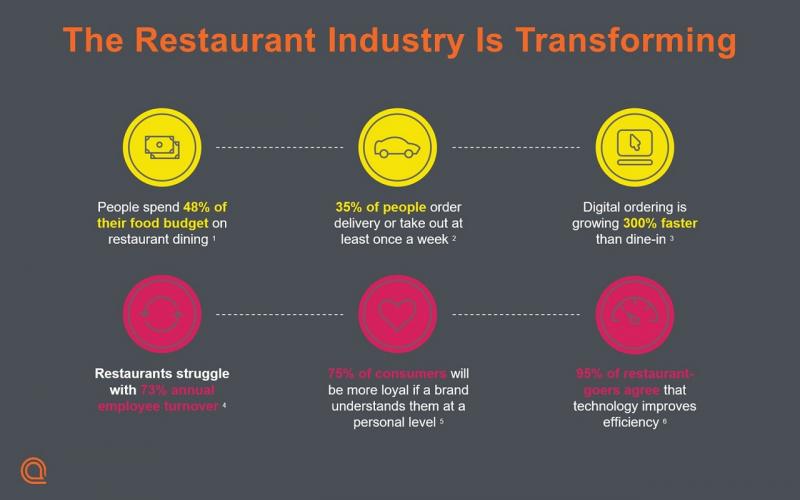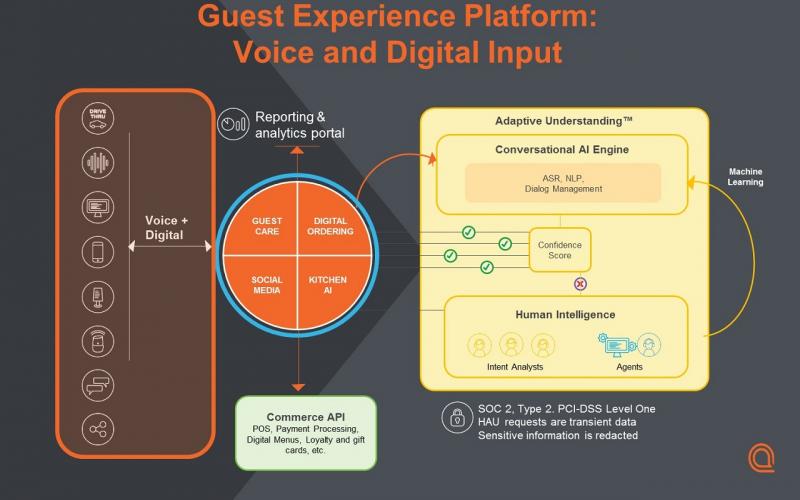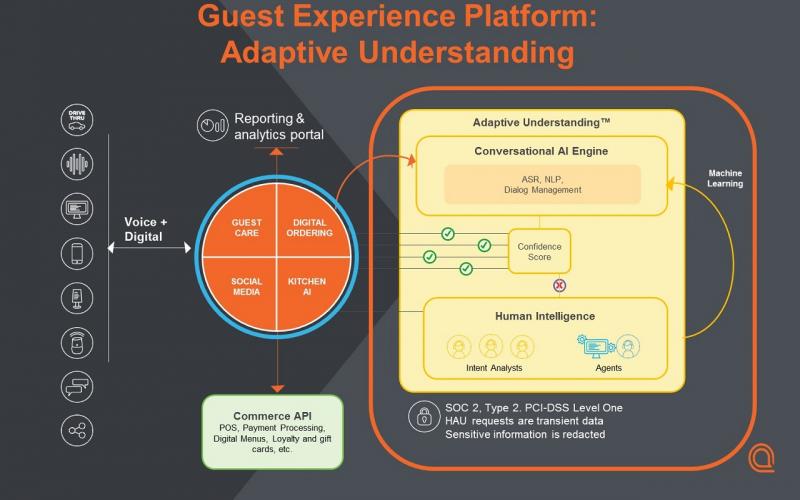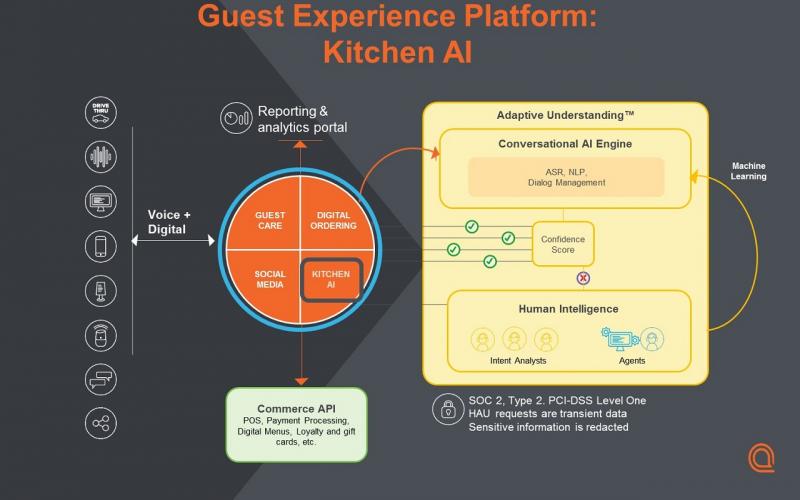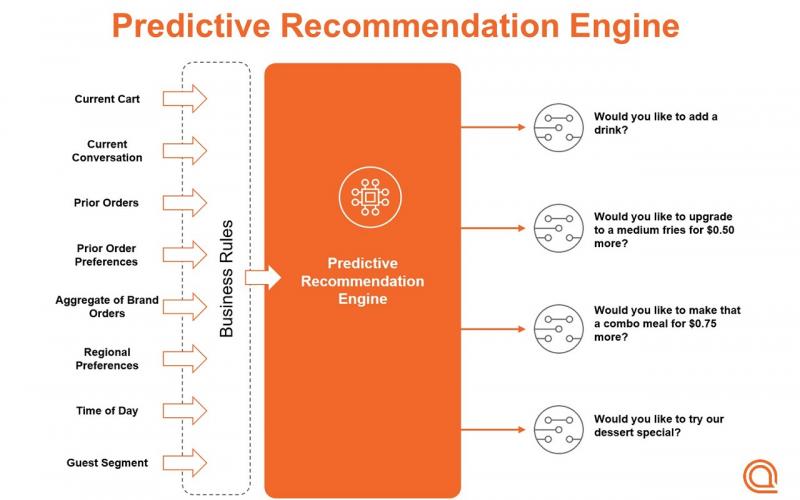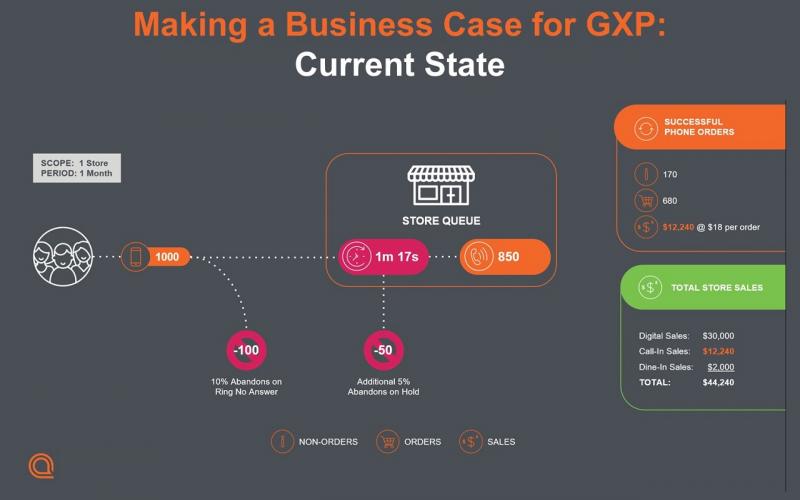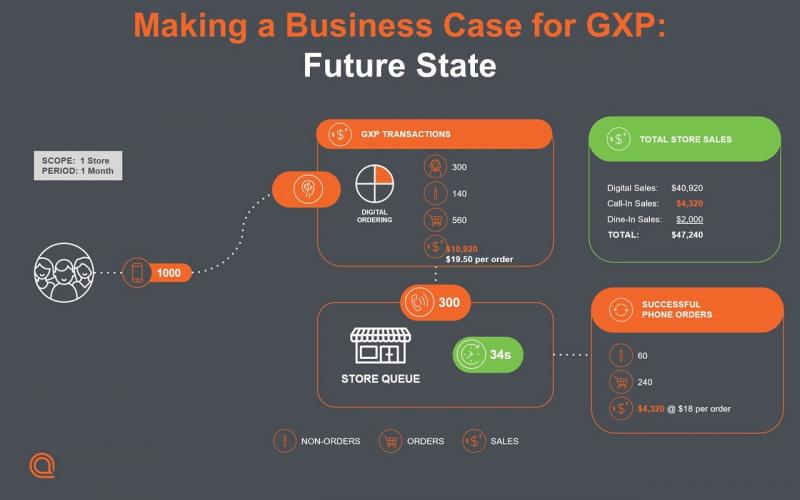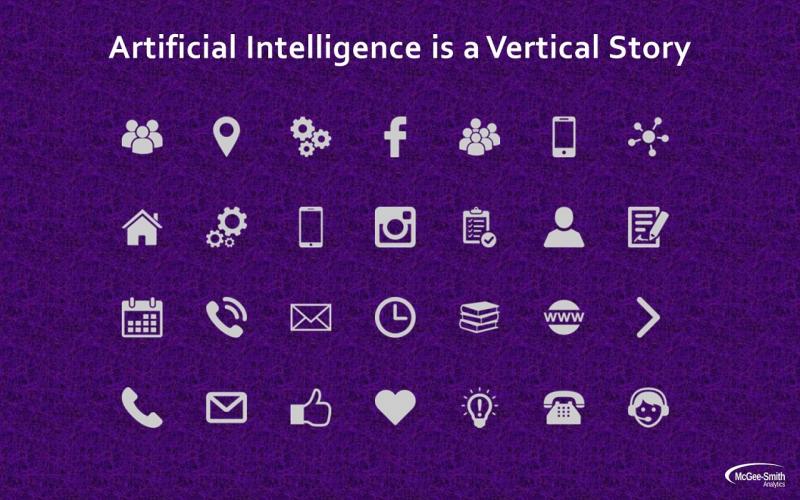Predictive Recommendation Engine
Another food services-specific element of GXP is a proprietary Predictive Recommendation Engine. In analyzing more than 100,000 customer interactions across a number of different types of restaurants, Interactions discovered that only 30% of customers received an upsell option, Bob said during our briefing.
Of those, he continued, one quarter of the customers accepted the offer, resulting in upsells in 7.5% of interactions. If, by using GXP, restaurants offer an upsell 100% of the time, that revenue would grow by more than 300%. Put another way, Bob said, “restaurants are leaving money on the table... no pun intended.”
In addition to ensuring that restaurants are consistently offering upsells, the Predictive Recommendation Engine pairs contextual cues and historical trends with restaurant-defined business rules so that suggestions offered are both of a type and at a time that a customer is most likely to accept them. For example, if a customer has said she wants vegetarian food, she wouldn’t receive a special offer on a meat lover’s pizza.






